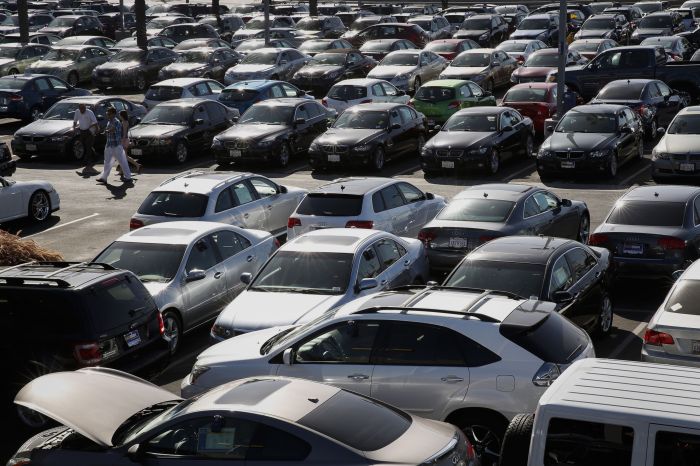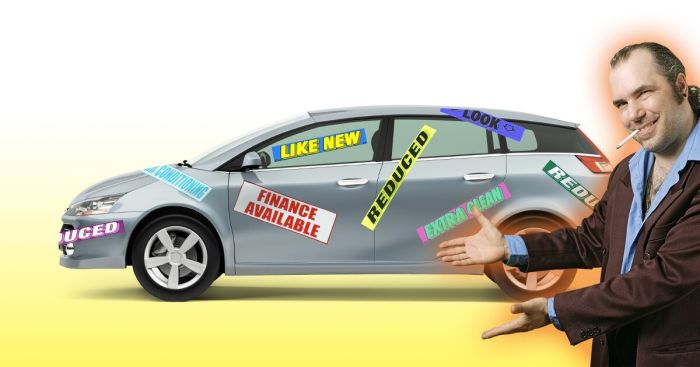New Car Price Crash Market Analysis
The New Car Price Crash: A Deep Dive
New car price crash – The automotive industry is experiencing a period of significant price volatility. While the term “crash” might be dramatic, the recent downturn in new car prices after a period of substantial inflation warrants a thorough examination. This analysis delves into the contributing factors, consumer impact, manufacturer responses, and future predictions regarding new car pricing.
Defining the “New Car Price Crash” Phenomenon

Source: crainscleveland.com
The recent decline in new car prices, following a period of substantial inflation, presents a complex picture. While not a complete “crash” in the traditional sense of a sudden, dramatic collapse, the price reduction represents a significant shift from the peak prices seen in recent years. Several factors have contributed to this fluctuation, including changes in supply chain dynamics, economic conditions, and manufacturer strategies.
Historically, new car prices have generally trended upwards, albeit with cyclical variations. Comparing current prices to historical data reveals a noticeable deviation from the long-term upward trajectory, particularly considering the sharp increases experienced during the pandemic. A five-year timeline illustrating these changes would show a steep incline in 2021-2022 followed by a more gradual decline or stabilization in 2023 and beyond.
The timeline would visually demonstrate the periods of rapid price increases fueled by supply chain disruptions and increased demand, contrasted with the subsequent moderation or decline influenced by factors like easing supply chain pressures, shifting consumer demand, and manufacturer incentives.
Impact on Consumers
The fluctuating prices of new cars have significantly impacted consumer purchasing power and behavior. Higher prices in 2021 and 2022 resulted in decreased affordability and a shift towards used cars or delaying purchases altogether. The subsequent price moderation has, in some segments, increased affordability and potentially stimulated demand. However, the overall economic climate still plays a crucial role.
Consumers are adapting to these price changes in various ways, including opting for less expensive models, negotiating more aggressively, and exploring alternative financing options. The psychological impact of price volatility is also noteworthy, influencing consumer confidence and willingness to make large purchases.
| Income Bracket | Affordability Index (Before) | Affordability Index (After) | Purchasing Behavior Changes |
|---|---|---|---|
| <$50,000 | Low | Slightly Improved | Increased consideration of used cars; still limited purchasing power |
| $50,000-$75,000 | Moderate | Improved | Increased willingness to consider new cars; potentially upgrading models |
| $75,000-$100,000 | High | High | Less impacted by price changes; more likely to purchase new cars |
| >$100,000 | Very High | Very High | Minimal impact; less sensitive to price fluctuations |
Manufacturer Response and Strategies

Source: bwbx.io
Auto manufacturers have responded to price changes through a variety of strategies, including adjusting production levels, offering incentives, and implementing targeted marketing campaigns. These responses vary depending on the manufacturer’s brand positioning, financial health, and market segment.
Maintaining profitability in a volatile market requires strategic agility. Domestic manufacturers might focus on cost-cutting measures, while foreign manufacturers may leverage their global supply chains to mitigate disruptions.
- Marketing Strategies: Increased advertising, targeted promotions, and emphasizing value propositions.
- Production Adjustments: Optimizing production lines, focusing on high-demand models, and managing inventory levels effectively.
- Pricing Strategies: Offering discounts, financing incentives, and adjusting pricing based on market demand and competitor actions.
The Role of Supply Chain Issues
Supply chain disruptions, particularly the semiconductor chip shortage, have played a significant role in shaping new car prices. The shortage of essential components like microchips has constrained production, leading to limited inventory and higher prices. Other materials and parts have also experienced shortages, further exacerbating the issue.
The impact of chip shortages on car production has been substantial, causing significant delays and limiting the availability of new vehicles. Improvements in the supply chain would likely lead to increased production and potentially lower prices. Conversely, further disruptions could prolong the current situation and maintain upward pressure on prices.
Economic Factors and Predictions
Inflation, interest rates, and the overall economic climate significantly influence new car prices. High inflation increases the cost of production and reduces consumer purchasing power, while higher interest rates make financing more expensive. A recessionary environment can further depress demand and impact prices.
Predicting future price trends requires considering various economic scenarios. For example, a scenario of continued low inflation and stable interest rates could lead to a gradual stabilization or even slight decline in prices. Conversely, a resurgence of inflation or a significant economic downturn could cause renewed price increases.
A visual representation of the relationship between economic indicators and car prices would show a correlation between inflation and interest rates with price levels. Government policies, such as subsidies or tariffs, could also significantly influence prices. For instance, government incentives for electric vehicles could lower prices in that specific segment.
Used Car Market Implications, New car price crash

Source: bwbx.io
The new and used car markets are intrinsically linked. Changes in new car prices directly impact the used car market. For instance, when new car prices are high, demand for used cars increases, driving up their prices. Conversely, a decline in new car prices can lead to a decrease in used car prices.
Comparing price trends in both segments reveals a strong correlation, with used car prices often lagging behind new car prices but still exhibiting a similar trend. A table showing this correlation would highlight the dynamic interplay between the two markets.
| Year | Average New Car Price | Average Used Car Price | Price Ratio (New/Used) |
|---|---|---|---|
| 2019 | $37,000 (example) | $25,000 (example) | 1.48 |
| 2020 | $38,000 (example) | $26,000 (example) | 1.46 |
| 2021 | $45,000 (example) | $32,000 (example) | 1.41 |
| 2022 | $48,000 (example) | $35,000 (example) | 1.37 |
| 2023 | $46,000 (example) | $33,000 (example) | 1.39 |
Helpful Answers: New Car Price Crash
What are the most common reasons for delays in new car deliveries?
Delays are frequently caused by ongoing semiconductor chip shortages, impacting various vehicle components. Other factors include logistical bottlenecks and material scarcity.
The recent new car price crash has been surprising, impacting both buyers and manufacturers. Understanding current market trends is crucial, and a good place to start is by checking out the pricing details for micro-trend car brands at micro trend car brand new price. This data can offer insights into how specific segments are faring amidst this overall downturn, helping to paint a clearer picture of the current automotive market landscape and the reasons behind the price crash.
How long will the current price volatility likely persist?
Predicting the duration of price volatility is challenging. Resolution depends on improvements in the global supply chain, inflation rates, and overall economic stability. A return to more predictable pricing could take months or even years.
Are there any government initiatives to alleviate the impact of high car prices?
Government policies vary by region. Some governments might offer incentives to encourage the purchase of fuel-efficient vehicles or provide subsidies to support the domestic auto industry, but this is not universally implemented.





















